Library, Admont Abbey (1776)*
Artist/Designer: Josef Hueber, Bartolomeo Altomonte
Project Location: Austria
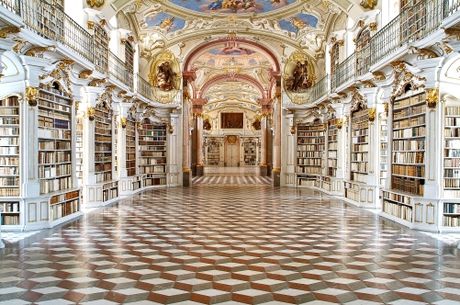
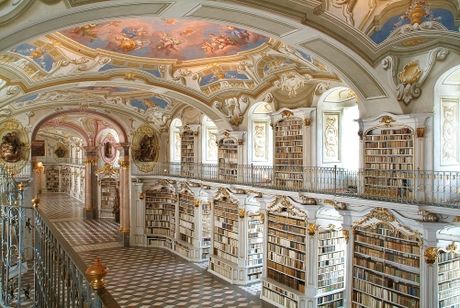
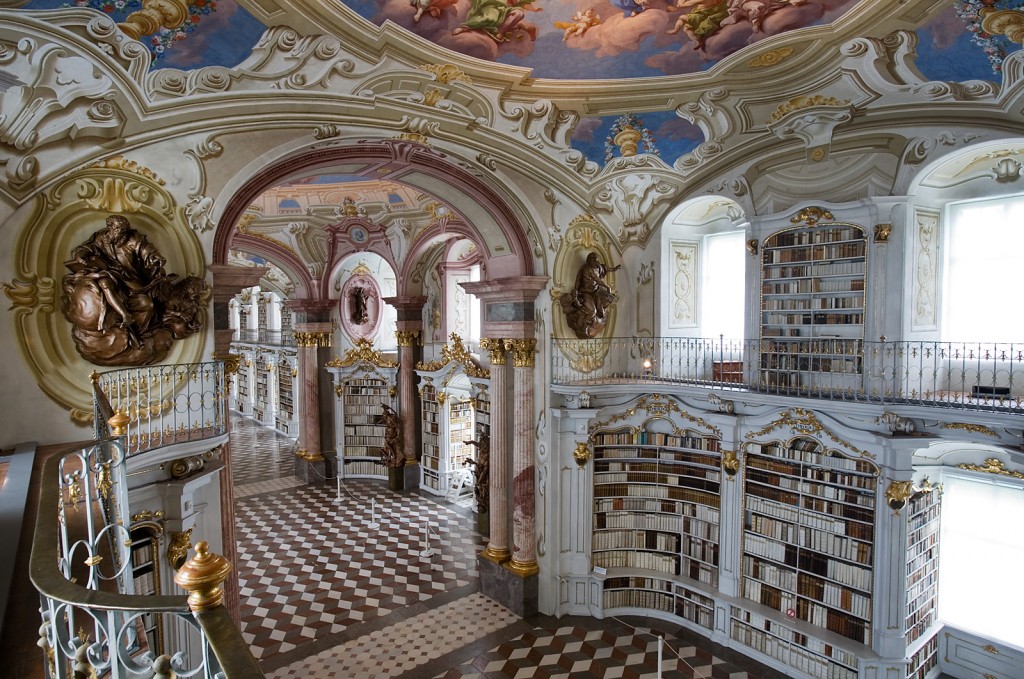

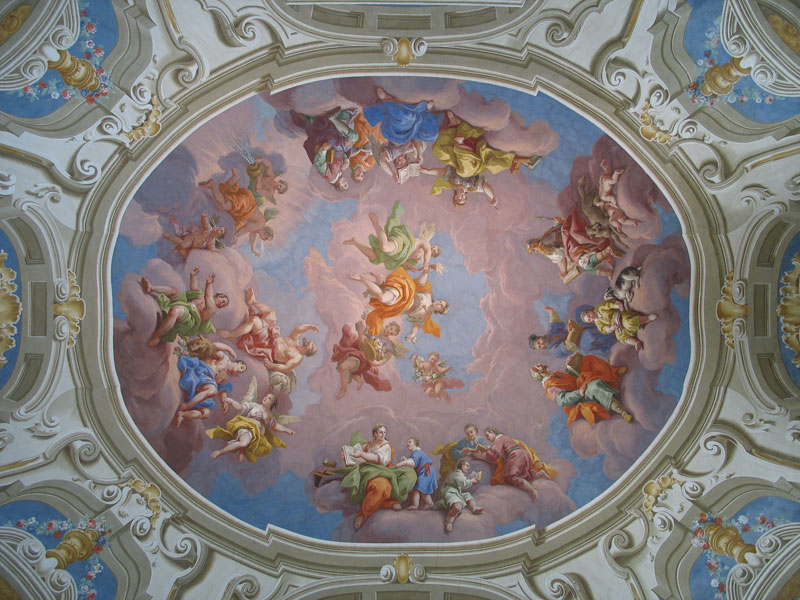
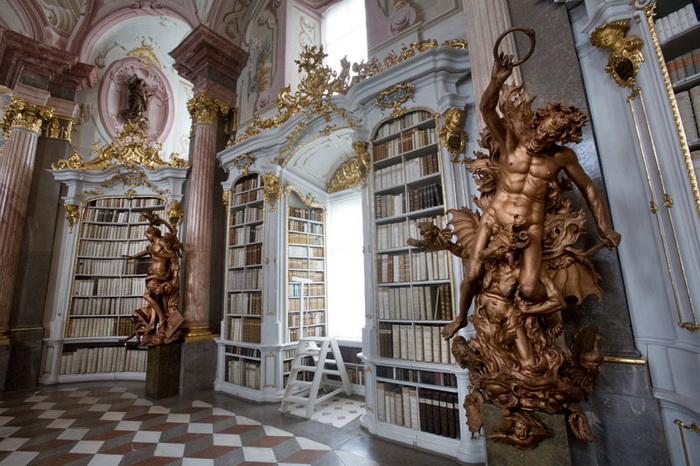

Style/Period(s):
Baroque
Primary Material(s):
Stone, Plaster, Paint
Function(s):
Library
Related Website(s):
Significant Date(s):
18th Century
Additional Information:
The Admont Monastery is one of the oldest existing monasteries in the world having been founded by Archbishop Gebhard of Salzburg in 1074. Since its foundation, the monastery made great strides to collect and preserve culture artifacts, especially books. The library has since then taken the role of a cultural monument as it functions as a complete work of art as well as a repository of knowledge. Commissioned by Abbot Matthäus Offner and designed by Joseph Hueber, the library is ornamented through various artistic genres including painting, sculpture, metal work, fresco, and architecture. Hueber's design is characteristic of Enlightenment ideals of the Baroque period, which is demonstrated through his use of light that shines in through the 48 windows and is reflected by the gold and silver ornamentation throughout the space. Moreover, the ceiling is divided into seven cupolas which are decorated with frescoes by Bartolomeo Altomonte, each representing a stage of human knowledge, from science leading up to its highest point, Divine Revelation, in the central cupola. The bookcases beneath the cupolas are decorated with gilded acanthus leaves and molding; they contain numerous volumes of the monastery's book collection, mostly consisting of various editions of the bible and other such theological literature. Along with the frescoes and stucco appliques are a group of over-lifesize sculptures by monastery sculptor Josef Stammel of "The Last Things." Representing death, the last judgement, heaven and hell, these works contrast with Altomonte's frescoes however they make reference to the original "source material" of the Abbey- that of religious devotion.
Publications/Texts in Print-
Gotze, J. 2002. "The Natural History Museum of the Benedictine Abbey, Admont (Austria), Diptera Collectionis P. Gabriel Strobl". ACTA- UNIVERSITATIS CAROLINAE BIOLOGICA. 46: 219-220.
Building Address
Kirchplatz 1, 8911 Admont, Austri
Supporting Designers
Frescoes by Bartolomeo Altomonte
Sculptures by Joseph Stammel
Tags:
Library, Austria, Austrian, Frescoes, Marble, Baroque
Viewers should treat all images as copyrighted and refer to each image's links for copyright information.